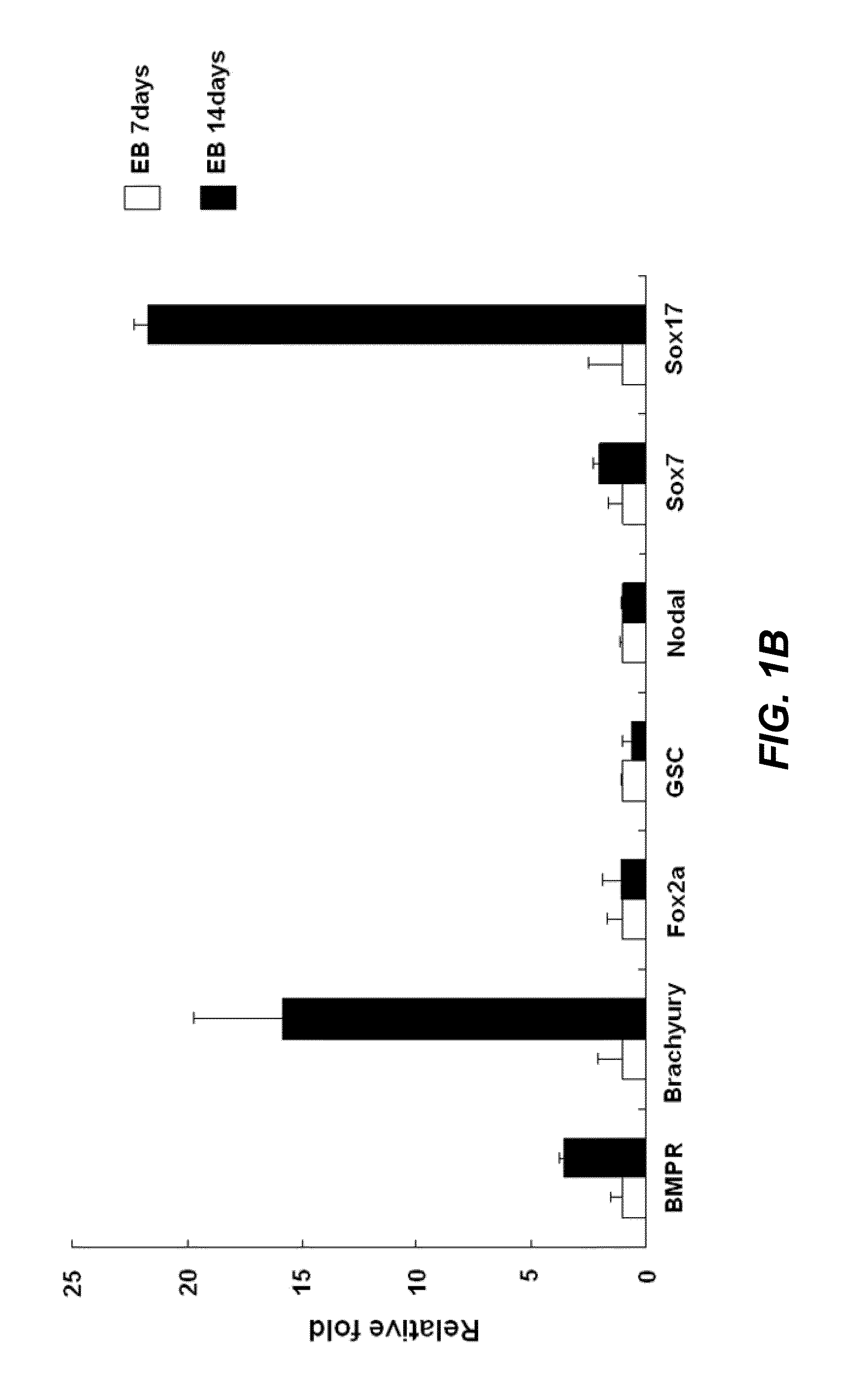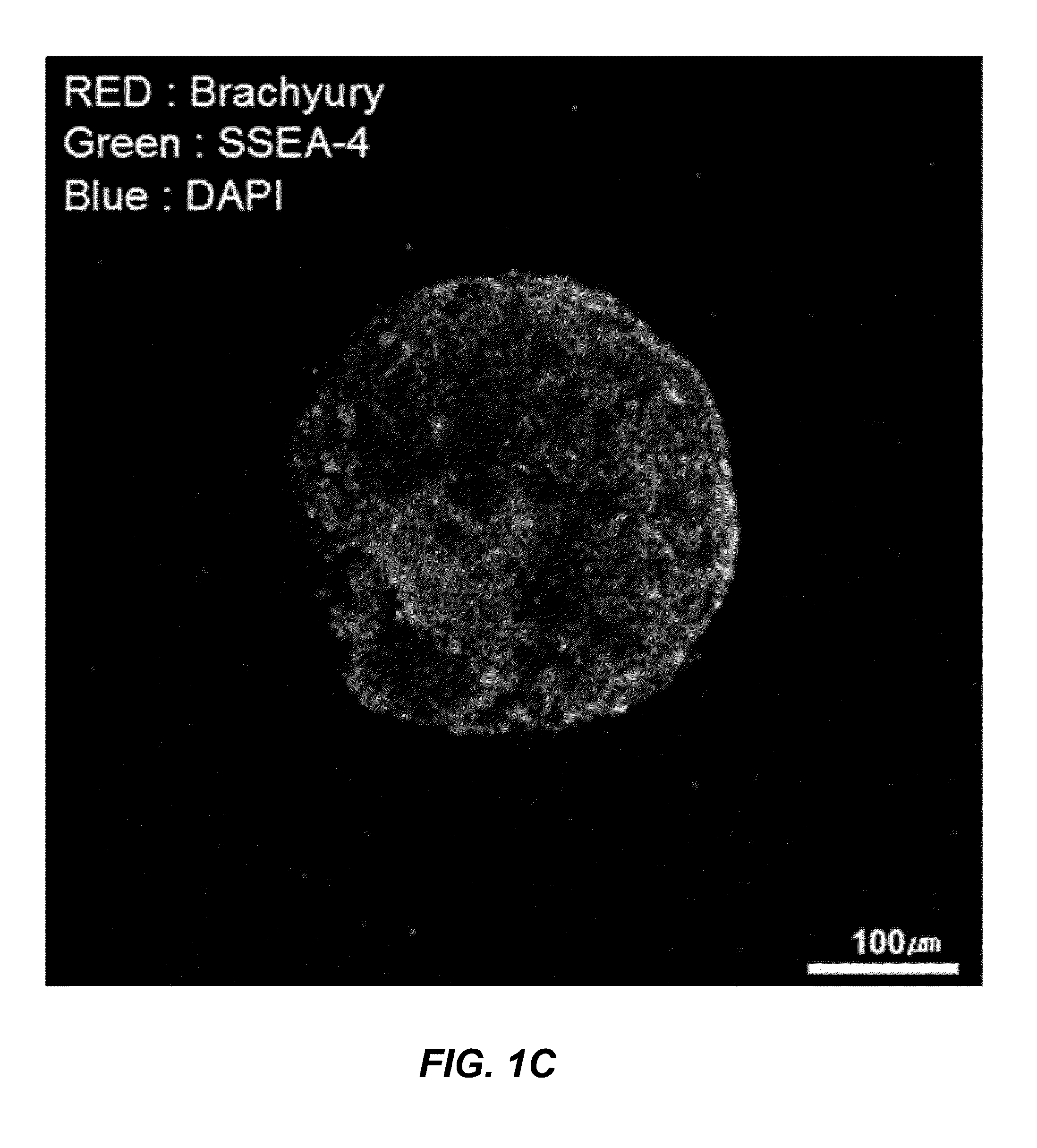Mesenchymal stem cells produced from human pluripotent stem cells
a technology of mesenchymal stem cells and stem cells, which is applied in the direction of drug compositions, cardiovascular disorders, skeletal/connective tissue cells, etc., can solve the problems of not being able to clearly define mesenchymal stem cells, not being able to be used as cell therapy products, and not being able to achieve the effect of high efficiency
- Summary
- Abstract
- Description
- Claims
- Application Information
AI Technical Summary
Benefits of technology
Problems solved by technology
Method used
Image
Examples
example 1
Production of Mesenchymal Stem Cells from Human Embryonic Stem Cells of Seoul National University Hospital
[0048](1) Formation of Embryonic Bodies
[0049]Human embryonic stem cells of Seoul National University Hospital (Asian #1, male, STO feeder), which were maintained in an undifferentiated state, were treated with dispase (2 mg / ml), followed by isolation through fine working, and then cultured in a suspension state in an embryonic stem cell medium free from bFGF for 14 days.
[0050]Gene analysis was performed on the embryonic bodies on day 7 and on day 14 of culture, and a difference in gene expression associated with mesenchymal differentiation for respective embryonic bodies was quantified by using polymerase chain reaction (PCR). It was confirmed that brachyury and BMPR, which are genes associated with early mesenchymal differentiation, and Sox 17, which is an important gene in early cardiac mesenchymal cells, are remarkably highly expressed in the embryonic bodies on day 14 of cul...
example 2
Characterization of Mesenchymal Stem Cells
[0059](1) Analysis of Cell Surface Markers
[0060]It was analyzed whether or not cell surface markers specific to the mesenchymal stem cells obtained in Example 1 are expressed. The results which are obtained by using a fluorescent activated cell sorter after the antigen-antibody reaction were shown in FIG. 5. IgG, was used as a control.
[0061]It was confirmed from FIG. 5A, that CD73 and CD105, which are markers specific to the mesenchymal stem cells, were expressed still in a large amount, in the cells on day 95 of culture (D95) and on day 129 of culture(D129). In addition, cell surface marker analysis was performed on the mesenchymal stem cells on day 129 of culture, and the results were shown in FIG. 5B. It was confirmed from FIG. 5B, that CD29, CD44, and CD90, which are human mesenchymal stem cell (hMSC) markers, were expressed, but neither SSEA1, SSEA4, TRA-1-60, and OCT-4, which are human embryonic stem cell (hESC) markers, nor endoderm a...
example 3
Production of Mesenchymal Stem Cells from Human Embryonic Stem Cells of Cha Medical Center and H9 Human Embryonic Stem Cells and Characterization Thereof
[0079]Conducted were experiments for confirming whether or not the production method of the mesenchymal stem cells of the present invention can be generally applied to human pluripotent stem cells having different genetic backgrounds and / or culture environments, that is, reproducibility thereof. The experiment was conducted by the same method as Example 1 of the present invention, except that human embryonic stem cell line No. 3 of Cha Medical Center (CHA3-hESC) and H9 human embryonic stem cells, which have different genetic backgrounds and / or culture environments from the human embryonic stem cells of Seoul National University Hospital, were used. Specifically, after attachment of the embryonic bodies on day 14 of the culture, spontaneous differentiation into the mesenchymal stem cells is induced in a general culture medium without...
PUM
| Property | Measurement | Unit |
|---|---|---|
| plasticity | aaaaa | aaaaa |
| cell mass | aaaaa | aaaaa |
| concentration | aaaaa | aaaaa |
Abstract
Description
Claims
Application Information
 Login to View More
Login to View More - R&D
- Intellectual Property
- Life Sciences
- Materials
- Tech Scout
- Unparalleled Data Quality
- Higher Quality Content
- 60% Fewer Hallucinations
Browse by: Latest US Patents, China's latest patents, Technical Efficacy Thesaurus, Application Domain, Technology Topic, Popular Technical Reports.
© 2025 PatSnap. All rights reserved.Legal|Privacy policy|Modern Slavery Act Transparency Statement|Sitemap|About US| Contact US: help@patsnap.com



